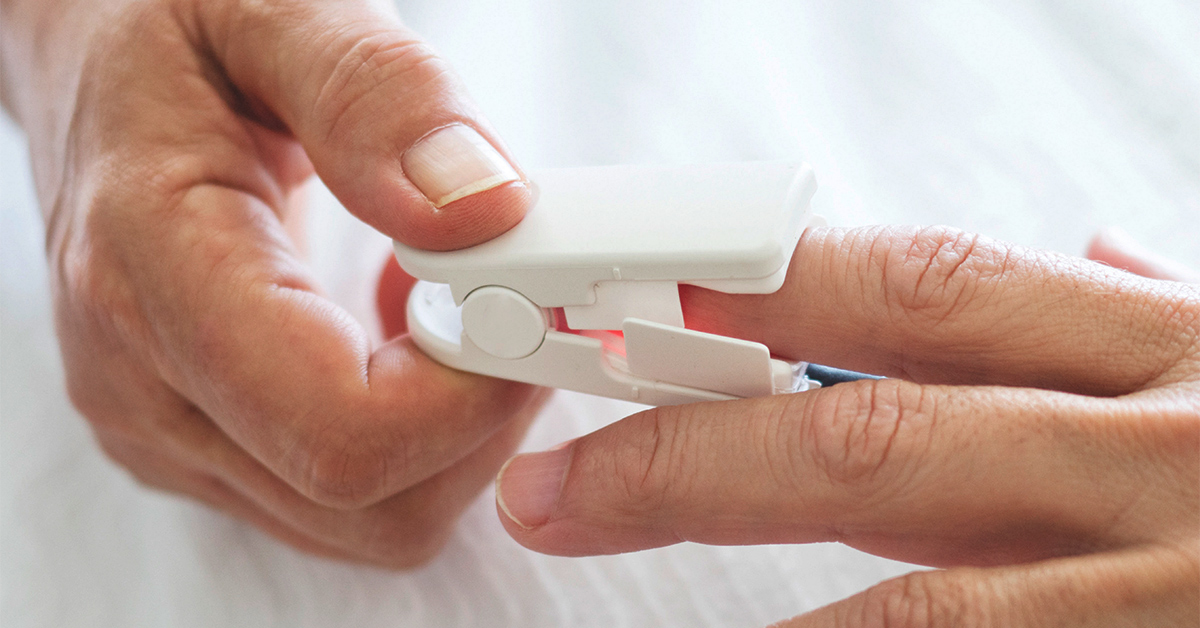Want to improve your oxygen levels? Let us help with these tips.
The most commonly used method of measuring blood oxygen levels in hospitals is a small device - resembling a clip - called a pulse oximeter.The oximeter is placed on a small, translucent part of your body like a finger tip or ear lobe where there isn't a whole lot going on. Now that you know the importance of having high levels of oxygen in your blood, you won’t want to miss these remaining 14 ideas that are inexpensive, easy, and life-changing: Maximize Your Glutathione levels Known as your body’s most powerful antioxidant, glutathione is a tripeptide found in every single cell in your body. The blood in your body delivers oxygen to all of your cells. When you breathe and draw fresh oxygen into your lungs, red blood cells bind with the oxygen and carry it through your bloodstream. Added oxygen may be needed for people whose oxygen level falls below 90 percent and home oxygen therapy may be recommended to regain normal levels. When oxygen saturation drops below 80 percent, severe hypoxemia occurs. Hypoxemia is a low level of oxygen in the blood that disrupts body function and harms vital tissues. Low blood oxygen levels can impede all of these activities and more. Understanding Blood Oxygen Levels. What do the terms mean in blood tests and oxygen measurements? Arterial blood gas (ABG): This common blood test is used to check the levels of oxygen in your blood, as well as blood pH and carbon dioxide present.
For those suffering from chronic obstructive pulmonary disease, the ability to take in oxygen is a constant struggle. It’s possible to increase oxygen levels in other ways, such as cellular therapy. If you or a loved one is finding normal breathing difficult, the Lung Health Institute has compiled the top 5 ways to improve your oxygen levels.
5.) Stay Fresh, Stay Natural
There are natural alternatives to increase oxygen in your home. Adding plants such as the areca palm, snake plant, money plant, gerbera daisy or Chinese evergreens can actually increase the oxygen in your home naturally.
Try adding natural air purifiers such as salt lamps, beeswax candles, peace lily and bamboo charcoal to help keep the air in your home cleaner.
4.) Be Calm
Relaxation techniques can help someone with COPD. When you’re calm, deep breathing becomes easier, stress levels lower and your oxygen levels can improve. You can try meditation, yoga, positive thinking exercises and writing in a journal to help you relax, breathe and improve your oxygen levels.

3.) Healthy Fluids
Staying hydrated can be challenging, but it can also help you improve your oxygen levels. Water molecules or H2O are made of two hydrogen atoms and one oxygen atom. Drinking enough water will help you stay hydrated. When you’re hydrated, it’s easier for your blood to deliver nutrients and oxygen to the rest of your body.
If you want to try other fluids, then fresh juices and smoothies might be a good choice. Because fresh fruits and vegetables are full of vitamins, minerals and antioxidants, juicing them can help you receive their benefits in a more easily digestible form.
2.) Eat for Oxygen Success

Even though certain foods such as dairy and cruciferous vegetables like broccoli can cause COPD symptom flare-ups, there are other healthy options. Try eating fresh, steamed vegetables such as spinach, bell peppers, potatoes, carrots and green beans. Before starting or changing your diet, be sure to discuss it with your doctor.
Cutting down on your salt intake can help you reduce excess fluid and bloating. Instead of salt, try herbs and spices such as peppermint, oregano and turmeric, which are all herbs that can help your lungs. When your lungs are breathing more easily, you’ll have improved oxygen levels, helping you feel better overall.

Blood Oxygenation Level
1.) Cellular Therapy to Improve Oxygen Levels
Oxygen is important to all of the functions of the body. However, for someone with a chronic lung disease, it can be difficult to get enough oxygen. For many people, cellular therapy has helped them improve their oxygen levels, breathe easier and improve their overall quality of life. Cellular therapy may promote the healing of lung tissue, potentially improving lung function. When lung function improves, you are able to take in more oxygen as well as expel carbon dioxide because your lungs are working more effectively.
Like many people with chronic lung diseases, Lung Health Institute patient, Joseph O., was on supplemental oxygen 24/7. Ready for a change, Joseph came to the Lung Health Institute for treatment. After his treatment, Joseph feels better than ever and is off of his oxygen completely.
If you or a loved one has COPD, emphysema, pulmonary fibrosis or another chronic lung disease, the Lung Health Institute may be able to help. Contact us.
A patient care coordinator is waiting to hear from you. Contact us today to schedule your free consultation. Call Toll-free 888-745-6697

Have you tried any of our steps? Tell us about your experience! Share your thoughts and comments on the 5 Ways to Improve Your Oxygen Levels below. Vsdx file format converter.
Using supplemental oxygen will increase your oxygen levels but there are other tips that can help increase your oxygen levels, its circulation and your body’s ability to take up the additional oxygen and utilise it more efficiently.Take a look at these ideas as in conjunction with your home oxygen therapy a little change could greatly increase your oxygen levels and quality of life.
These 10 ideas will help to improve your oxygen levels:
1. Open your windows. Fresh air will bring additional oxygen into your home and even if you are constantly breathing in oxygen through a cannula, whenever you talk or open your mouth fresh air containing higher oxygen levels can be drawn into your body. If you live in a smoggy area then you could consider investing in an air-filtration system.
2. Plants. They are the opposite of us as they take-in carbon dioxide and expel oxygen. Thereby increasing the foliage and plants in your home will decrease the carbon dioxide and increase the oxygen levels in your home.
3. Aroma. Many of the chemical-filled candles and various other incense type products actually contain carcinogens. Instead it is better to burn all-natural beeswax candles as then you’ll have better luck breathing in oxygen.
Oxygen Level Chart
4. Exercise. Even a small amount of exercise will help to improve your respiration ability, as your breathing rate increases and deepens your lungs can absorb more oxygen.
5. Increase your water intake. Water is made up of oxygen so by increasing your water consumption you can increase the amount of oxygen in your body.
6. Go Green. Eating more fresh, raw green juices is beneficial as they are full of vitamins and minerals which your body utilises to aid in the uptake of oxygen.
7. Meditation. Daily meditation or just simply sitting quietly and focusing on your breathing and taking deep breaths for a few minutes can greatly help in reducing stress and improving your oxygen intake.
8. Eat lron-rich foods. Your diet can seriously impact your oxygen levels. Certain foods can help improve your oxygen levels in the blood naturally. Target iron-rich foods such as meats, poultry, fish, legumes and green leafy vegetables as they can improve iron deficiency, which in turn improves blood oxygen levels.
9. Cut out Salt. A diet low in sodium can lead to increased oxygenation via the kidney and the blood.
10. Eat green raw foods. Oxygen-rich foods can naturally increase your blood oxygen levels. Try eating more green vegetables like kale, broccoli and celery in order to boost your oxygen levels and hopefully breathe easier.
Blood Oxygen Levels Normal Range
References: http://lunginstitute.com

